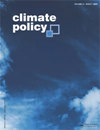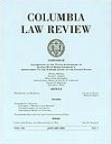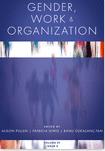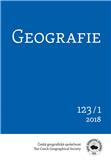Artificial Intelligence And LawSCIESSCI
國際簡稱:ARTIF INTELL LAW 參考譯名:人工智能與法律
- 基本信息:
- ISSN:0924-8463
- E-ISSN:1572-8382
- 是否OA:未開放
- 是否預警:否
- TOP期刊:是
- 出版信息:
- 出版地區:NETHERLANDS
- 出版商:SPRINGER
- 出版語言:English
- 出版周期:4 issues per year
- 研究方向:Multiple
- 評價信息:
- 影響因子:3.1
- CiteScore指數:9.5
- SJR指數:1.501
- SNIP指數:3.467
- 發文數據:
- Gold OA文章占比:40.82%
- 研究類文章占比:97.44%
- 年發文量:39
- 自引率:0.2682...
- 開源占比:0.4066
- 出版撤稿占比:0
- 出版國人文章占比:0
- OA被引用占比:0.3902...
英文簡介Artificial Intelligence And Law期刊介紹
Artificial Intelligence and Law is an international forum for the dissemination of original interdisciplinary research in the following areas: Theoretical or empirical studies in artificial intelligence (AI), cognitive psychology, jurisprudence, linguistics, or philosophy which address the development of formal or computational models of legal knowledge, reasoning, and decision making. In-depth studies of innovative artificial intelligence systems that are being used in the legal domain. Studies which address the legal, ethical and social implications of the field of Artificial Intelligence and Law.
Topics of interest include, but are not limited to, the following: Computational models of legal reasoning and decision making; judgmental reasoning, adversarial reasoning, case-based reasoning, deontic reasoning, and normative reasoning. Formal representation of legal knowledge: deontic notions, normative
modalities, rights, factors, values, rules. Jurisprudential theories of legal reasoning. Specialized logics for law. Psychological and linguistic studies concerning legal reasoning. Legal expert systems; statutory systems, legal practice systems, predictive systems, and normative systems. AI and law support for legislative drafting, judicial decision-making, and
public administration. Intelligent processing of legal documents; conceptual retrieval of cases and statutes, automatic text understanding, intelligent document assembly systems, hypertext, and semantic markup of legal documents. Intelligent processing of legal information on the World Wide Web, legal ontologies, automated intelligent legal agents, electronic legal institutions, computational models of legal texts. Ramifications for AI and Law in e-Commerce, automatic contracting and negotiation, digital rights management, and automated dispute resolution. Ramifications for AI and Law in e-governance, e-government, e-Democracy, and knowledge-based systems supporting public services, public dialogue and mediation. Intelligent computer-assisted instructional systems in law or ethics. Evaluation and auditing techniques for legal AI systems. Systemic problems in the construction and delivery of legal AI systems. Impact of AI on the law and legal institutions. Ethical issues concerning legal AI systems. In addition to original research contributions, the Journal will include a Book Review section, a series of Technology Reports describing existing and emerging products, applications and technologies, and a Research Notes section of occasional essays posing interesting and timely research challenges for the field of Artificial Intelligence and Law. Financial support for the Journal of Artificial Intelligence and Law is provided by the University of Pittsburgh School of Law.
期刊簡介Artificial Intelligence And Law期刊介紹
《Artificial Intelligence And Law》是一本社會學優秀雜志。致力于發表原創科學研究結果,并為社會學各個領域的原創研究提供一個展示平臺,以促進社會學領域的的進步。該刊鼓勵先進的、清晰的闡述,從廣泛的視角提供當前感興趣的研究主題的新見解,或審查多年來某個重要領域的所有重要發展。該期刊特色在于及時報道社會學領域的最新進展和新發現新突破等。該刊近一年未被列入預警期刊名單,目前已被權威數據庫SCIE、SSCI收錄,得到了廣泛的認可。
該期刊投稿重要關注點:
Cite Score數據(2024年最新版)Artificial Intelligence And Law Cite Score數據
- CiteScore:9.5
- SJR:1.501
- SNIP:3.467
| 學科類別 | 分區 | 排名 | 百分位 |
| 大類:Social Sciences 小類:Law | Q1 | 16 / 1025 |
98% |
| 大類:Social Sciences 小類:Artificial Intelligence | Q1 | 70 / 350 |
80% |
CiteScore 是由Elsevier(愛思唯爾)推出的另一種評價期刊影響力的文獻計量指標。反映出一家期刊近期發表論文的年篇均引用次數。CiteScore以Scopus數據庫中收集的引文為基礎,針對的是前四年發表的論文的引文。CiteScore的意義在于,它可以為學術界提供一種新的、更全面、更客觀地評價期刊影響力的方法,而不僅僅是通過影響因子(IF)這一單一指標來評價。
中科院SCI分區Artificial Intelligence And Law 中科院分區
| 大類學科 | 分區 | 小類學科 | 分區 |
| 社會學 | 2區 | LAW 法學 COMPUTER SCIENCE, ARTIFICIAL INTELLIGENCE 計算機:人工智能 COMPUTER SCIENCE, INTERDISCIPLINARY APPLICATIONS 計算機:跨學科應用 | 1區 2區 2區 |
中科院分區表 是以客觀數據為基礎,運用科學計量學方法對國際、國內學術期刊依據影響力進行等級劃分的期刊評價標準。它為我國科研、教育機構的管理人員、科研工作者提供了一份評價國際學術期刊影響力的參考數據,得到了全國各地高校、科研機構的廣泛認可。
中科院分區表 將所有期刊按照一定指標劃分為1區、2區、3區、4區四個層次,類似于“優、良、及格”等。最開始,這個分區只是為了方便圖書管理及圖書情報領域的研究和期刊評估。之后中科院分區逐步發展成為了一種評價學術期刊質量的重要工具。
JCR分區Artificial Intelligence And Law JCR分區
| 按JIF指標學科分區 | 收錄子集 | 分區 | 排名 | 百分位 |
| 學科:COMPUTER SCIENCE, ARTIFICIAL INTELLIGENCE | SCIE | Q2 | 86 / 197 |
56.6% |
| 學科:COMPUTER SCIENCE, INTERDISCIPLINARY APPLICATIONS | SCIE | Q2 | 65 / 169 |
61.8% |
| 學科:LAW | SSCI | Q1 | 8 / 421 |
98.2% |
| 按JCI指標學科分區 | 收錄子集 | 分區 | 排名 | 百分位 |
| 學科:COMPUTER SCIENCE, ARTIFICIAL INTELLIGENCE | SCIE | Q1 | 24 / 198 |
88.13% |
| 學科:COMPUTER SCIENCE, INTERDISCIPLINARY APPLICATIONS | SCIE | Q1 | 20 / 169 |
88.46% |
| 學科:LAW | SSCI | Q1 | 48 / 421 |
88.72% |
JCR分區的優勢在于它可以幫助讀者對學術文獻質量進行評估。不同學科的文章引用量可能存在較大的差異,此時單獨依靠影響因子(IF)評價期刊的質量可能是存在一定問題的。因此,JCR將期刊按照學科門類和影響因子分為不同的分區,這樣讀者可以根據自己的研究領域和需求選擇合適的期刊。
發文數據
- 國家/地區數量
- USA20
- Italy14
- Netherlands8
- England7
- France6
- Australia5
- Luxembourg5
- Belgium4
- Japan4
- Poland4
本刊中國學者近年發表論文
-
1、How to justify a backing's eligibility for a warrant: the justification of a legal interpretation in a hard case
Author: Yu, Shiyang; Chen, Xi
Journal: ARTIFICIAL INTELLIGENCE AND LAW. 2023; Vol. 31, Issue 2, pp. 239-268. DOI: 10.1007/s10506-022-09311-0
-
2、Policing based on automatic facial recognition
Author: Guo, Zhilong; Kennedy, Lewis
Journal: ARTIFICIAL INTELLIGENCE AND LAW. 2023; Vol. 31, Issue 2, pp. 397-443. DOI: 10.1007/s10506-022-09330-x
-
3、Methods of incorporating common element characteristics for law article prediction
Author: Hou, Yifan; Cheng, Ge; Zhang, Yun; Zhang, Dongliang
Journal: ARTIFICIAL INTELLIGENCE AND LAW. 2023; Vol. , Issue , pp. -. DOI: 10.1007/s10506-023-09359-6
-
4、A novel MRC framework for evidence extracts in judgment documents
Author: Zhou, Yulin; Liu, Lijuan; Chen, Yanping; Huang, Ruizhang; Qin, Yongbin; Lin, Chuan
Journal: ARTIFICIAL INTELLIGENCE AND LAW. 2023; Vol. , Issue , pp. -. DOI: 10.1007/s10506-023-09344-z
-
5、Detecting the influence of the Chinese guiding cases: a text reuse approach
Author: Chen, Benjamin M.; Li, Zhiyu; Cai, David; Ash, Elliott
Journal: ARTIFICIAL INTELLIGENCE AND LAW. 2023; Vol. , Issue , pp. -. DOI: 10.1007/s10506-023-09358-7
-
6、Semantic matching based legal information retrieval system for COVID-19 pandemic
Author: Zhu, Junlin; Wu, Jiaye; Luo, Xudong; Liu, Jie
Journal: ARTIFICIAL INTELLIGENCE AND LAW. 2023; Vol. , Issue , pp. -. DOI: 10.1007/s10506-023-09354-x
投稿常見問題
-
請問這本期刊屬于什么級別呢?可用于職稱評定嗎?
一般刊物只分省級、部級、核心,期刊本身是沒有幾類劃分的,具體是幾類或者幾級,您可以對照單位的分類文件確認一下。Artificial Intelligence And Law雜志是由SPRINGER出版的一本SCIE、SSCI,可用于職稱評定。
-
你們能夠提供哪些核心期刊的咨詢服務?
大多數核心期刊我們都是可以提供咨詢服務的。目前核心期刊主要分為以下幾類:1.國內核心:按照權威度排序,社科類:南大核心>南大擴展>北大核心>科技核心 按照權威度排序。工科類:CSCD C庫>CSCD E庫(相當于CSCD擴展)>北大核心>科技核心。2.國外核心(全英文):按照權威度排序為:SSCI=SCI>EI>ISTP=CPCI。
-
想快速發表,可以加急嗎?
為了確保您的職稱評定順利進行,我們建議提前半年到一年開始準備,這樣能夠保證有充足的時間來處理所有相關事宜。如果客戶需要加急服務,我們會與雜志社進行溝通,以確定是否可以提供加急服務。請注意,如果確認可以加急,可能會收取一定的加急費用。
-
你們提供的服務可以確保稿件被發表嗎?
期刊編輯會綜合考慮多個因素,如發表范圍、學術價值和原創性等,對稿件進行綜合評估。盡管任何機構均無法保證每篇稿件都會被發表,但我們可以用專業知識和豐富經驗,協助您理解并遵循期刊的發表要求,從而提高您的稿件被發表的機率。
-
請問期刊發表的費用如何?
期刊發表的費用因期刊不同而異。根據您的需求,我們會為您推薦性價比最高的期刊,并提供專業的期刊供您選擇。一般來說,只要符合職稱要求,大多數作者都會選擇性價比最高的期刊作為意向期刊進行重點咨詢。我們會為您提供詳細的期刊信息和費用說明,以確保您能夠做出明智的選擇。
-
如果稿件被拒,未能成功發表,費用是否可以退還?
一般來說,我們推薦的期刊和您的專業方向、文章情況都是匹配的,極少出現稿件被拒的情況。如果稿件被拒,期刊編輯會提供詳細的拒稿信和建議,以幫助您了解拒稿原因并改進您的稿件。關于退款政策,具體情況可能因期刊不同而異,請您咨詢我們的工作人員以獲取詳細信息。
相關期刊推薦
熱門期刊推薦
-
Humanities And Social Sciences Communications
中科院 2區 JCR
-
Electoral Studies
中科院 2區 JCR Q1
-
Journal Of Human Development And Capabilities
中科院 3區 JCR Q3
-
Land Use Policy
中科院 1區 JCR Q1
-
Technology In Society
中科院 1區 JCR Q1
-
Asian Perspective
中科院 3區 JCR Q2
-
Child & Family Social Work
中科院 3區 JCR Q2
-
Social Indicators Research
中科院 2區 JCR Q1






